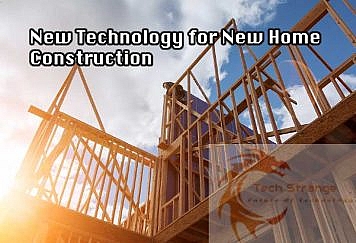The life of modern people is largely determined by technological progress: even interior design is unthinkable without new technologies and modern materials. One way or another, new technologies walk into every house, into every interior. Modern technologies in interior design: carbon fiber, methacryl, “smart glass” – science has armed designers with the most powerful weapon to create non-standard, creative interiors, characterized by a level of comfort that a few years ago we could not even imagine. It seems that designers have the most complete palette of tools to create interior masterpieces!
Today the profession of a designer also implies new responsibilities – they need to keep track of new products and unique technologies that constantly appear on the market, implement them, if possible, in their own projects, and be inspired by amazing innovations.
What interesting things are happening in the world of interior design and how this industry can please us today. In this article, we dive into the abundance of new materials and technologies, as today there are many designers who were born and raised in the digital age, so their projects always use cutting-edge technology and bold ideas that embody modern trends.
Transformer Furniture
Two-in-one furniture is a real find for lovers of minimalism and owners of small apartments. Yes, if have an opportunity you want to decorate the space with chic global united furniture. But sometimes it isn’t an option, as transformer furniture helps to free up space in the room and makes the room more functional. On the same area there can be a bedroom, which turns into a study room, or a living room, which at the same time serves as a playing field for children.
Today, such furniture is an excellent choice for small apartments, which are already hard to imagine without pull-out sofas, folding tables, etc. Cabinet and upholstered transformer furniture will also help if, for example, it is sometimes necessary to organize additional beds: the sofa installed in the office will turn it into a guest room. Obviously, modern designs perfectly combine functionality and stylish appearance.
New Materials
If earlier, many years ago, all building materials were natural, now they are supplemented by a number of artificially created materials for construction and decoration. And, if until recently it was believed that natural materials are better than artificial ones by definition, now one can argue with this. For example, some imitations of wood and stone, created using modern technologies, are not inferior to natural counterparts either in quality or in consumer properties, but last much longer.
The Carbon Fiber
The designers adopted a material that was actively used in the production of transport and the aviation industry. Lightweight, maximally rigid and incomparably durable material, which perfectly tolerates temperature fluctuations, has opened up completely new vectors of application of forces in the field of design.
Plexiglass
Plexiglas (acrylic glass) came to the field of design from the construction industry. A surge of special interest in it appeared in the 1960s, the era of space conquest, and the new material was ideally suited for the implementation of new bold projects. Then the whole world admired the first invisible chairs and the Acrilica lamp.
The “liquid” table of Zaha Hadid thundered all over the world, which went beyond the usual concept of “furniture.” It struck with unprecedented lightness, reminded of melting ice and flowing water surface. Later, interest in acrylic glass waned, but today this unusual material has returned from the “cosmic spheres” to earth, and in recent years this material has again gained popularity among young creative designers.
Laokoon
The Hungarian brand Laokoon and Szentyrmai-Joli Zsuzsanne have created a real breakthrough by creating innovative textiles consisting of movable small plates, cork or plastic. They can be bent and stretched, creating a “live” surface with different effects. The company presented a series of lighting fixtures, among which the public especially remembered a pair of Baabel and Medusa table lamps, a stylish Ensoo lamp and a cute variation of Drop.
Synthetic Resins
Synthetic materials are also quite popular in the world of design. Thus, Gaetano Pesce became the author of the unusual Tavolone table, where resins of contrasting colors are freely mixed with each other, creating a unique look and amazing dynamics. Another striking experience with synthetic resins can be boasted by the Italian studio Cedr/Martini, which presented the sculptural table Pangea – an allusion to the majestic natural phenomenon of stalactites. The impressive shape and bizarre configuration of the table can leave even the most sophisticated connoisseurs of unusual furniture speechless.
New Technologies: Ceilings
It would seem, what else can you think of to improve the ceiling?! Fortunately, there is no limit to human imagination: not only do there exist stretch ceilings of any shapes and colors, they can also be with prints. Now, instead of painting the ceiling by hand, which is painstaking work and costs a lot of money, although it looks very beautiful, you can order a print of the picture on the entire ceiling. Modern interior printing technologies have opened up many opportunities for interior designers.
Interior Printing on Any Surface
Since we touched on the topic of prints and drawings, it is worth mentioning a new and very useful technology in practical terms – UV printing on surfaces. The technology is based on paint that polymerizes under the influence of ultraviolet radiation and can be used on almost any surface: wallpaper, tiles, fabrics, furniture, plastic. How to apply this technology to your interior, you decide.
Unusual Floor
Among the many modern flooring technologies, we would like to separately note glass floors: an interesting and original option when the floor surface is made of glass, and under it there is a decorative element – an aquarium or plants. Also, glass floors can be diversified by lighting, decorative staining or spraying – there are many options!
In general, modern technologies in interior design are developing and constantly provide us with reasons to apply something new and interesting to our interiors. Remember: the ceiling does not have to be white, the floor – parquet, and the furniture – wooden. The world is full of new ideas, you just have to find your inspiration!
Application of Digital Technologies in Interior Design
Due to the development of markets and the changing needs of society in relation to interior design, it is necessary to find a new approach to meet individual needs. The importance of digital printing in interior architecture is constantly growing, as digital printing makes it possible to create special solutions to meet the individual needs of customers. Digital printing allows you to follow an individual lifestyle, as any digital image or graphic can be applied to any substrate. Thus, the diversity of interior finishes is growing through the use of a large number of materials, including glass, metal, wood, cork, leather, fabric, wallpaper or vinyl. At the same time, each design looks different on each of these materials, as the materials differ in properties and surface.
Clearly, the interior design market is in need of innovative ideas and solutions to meet the needs of its clients. In particular, the use of printed glass for wall cladding, partition dock and furniture is a new approach to meet these expectations. Decorative coatings on glass combined with digital printing add value to the simple and practical use of the glass substrate.
It’s important to go beyond just selling a product, as customers are overwhelmed and unable to handle the sheer volume of furniture, wall cladding, ceiling and floor products being supplied. It is important to convince the buyer of the expediency of the idea that creates emotions. Printed glass can definitely contribute to this strategy of creating innovation, inspiration and emotion, as the method is new and exciting and has a wide range of applications.
Follow TechStrange for more!





